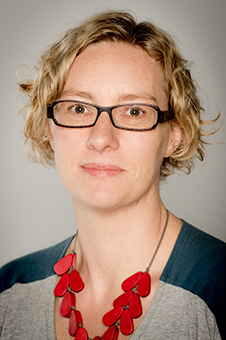Women use more diverse modes of travel and generate lower greenhouse gas emissions than men, despite men being more than twice as likely to travel by bike, a New Zealand study has found.
The researchers studied the transport patterns of almost 50,000 Kiwis between 2002 and 2014 based on data from the New Zealand Household Travel Survey.

Dr Caroline Shaw.
Lead researcher Dr Caroline Shaw from the University of Otago, Wellington says that while both men and women mostly travelled by car, there were distinct patterns of travel linked to gender.
Fewer women regularly cycled (two per cent) compared to men (five per cent) but women travelled shorter distances, Dr Shaw says.
“Women took more trips, but travelled between 12 and 17 per cent fewer kilometres per day and were more likely to walk and use public transport than men. Thus, women overall had a more diverse and lower greenhouse gas emission travel profile than men.”
Women also undertook more car trips of less than five kilometres each day than men, journeys that could potentially be done by bike.
The research focused on Kiwis who cycled for utility or transport reasons. The most common reasons for travel were to accompany others, go shopping or make social visits. In general, men took fewer trips for the purpose of accompanying others and made fewer shopping trips.
“We found differences in mode for trips for the same purpose by gender. For example, shopping trips undertaken by men in New Zealand are much more likely to be done using a car than those by women.”
Dr Shaw says there is significant potential to support increased cycling among women in New Zealand, based both on their propensity for using low greenhouse gas emission travel modes, the number of short trips taken by women that could be replaced by biking or walking and on evidence from overseas countries which have high numbers of cyclists, where women take half or more of their trips by bike.
“Women are already more flexible and lower carbon travellers than men. We need to provide them with better opportunities and support to do more of this type of travel.”
Dr Shaw says the research shows that specific changes in cycling infrastructure are needed to encourage women to cycle more on routes between their homes and the shops and to travel safely in the company of others.
“These would likely require whole street/suburb changes to make them safer and more attractive to walk and cycle for the whole family and be relevant for the places that women travel between, such as shops, schools and libraries, as well as workplaces.
“These are changes that require a much greater emphasis on what is local to where people live, to facilitate activities that might be regarded as mundane.”
Dr Shaw says policies also need to focus on how to get more men to use cycling and public transport for routine commuting.
“There are many opportunities to make men's travel lower carbon as well; the regular commute is the perfect trip to replace with cycling or public transport as it is predictable and regular.”
The research was funded by a Lottery Health Research grant.
Publication
'Beyond the bicycle: Seeing the context of the gender gap in cycling'
Journal of Transport and Health
For further information, contact:
Dr Caroline Shaw
Department of Public Health
University of Otago, Wellington
Email caroline.shaw@otago.ac.nz
Cheryl Norrie
Communications Adviser
University of Otago, Wellington
Mob +64 21 249 6787
Email cheryl.norrie@otago.ac.nz
FIND an Otago Expert
Use our Media Expertise Database to find an Otago researcher for media comment.